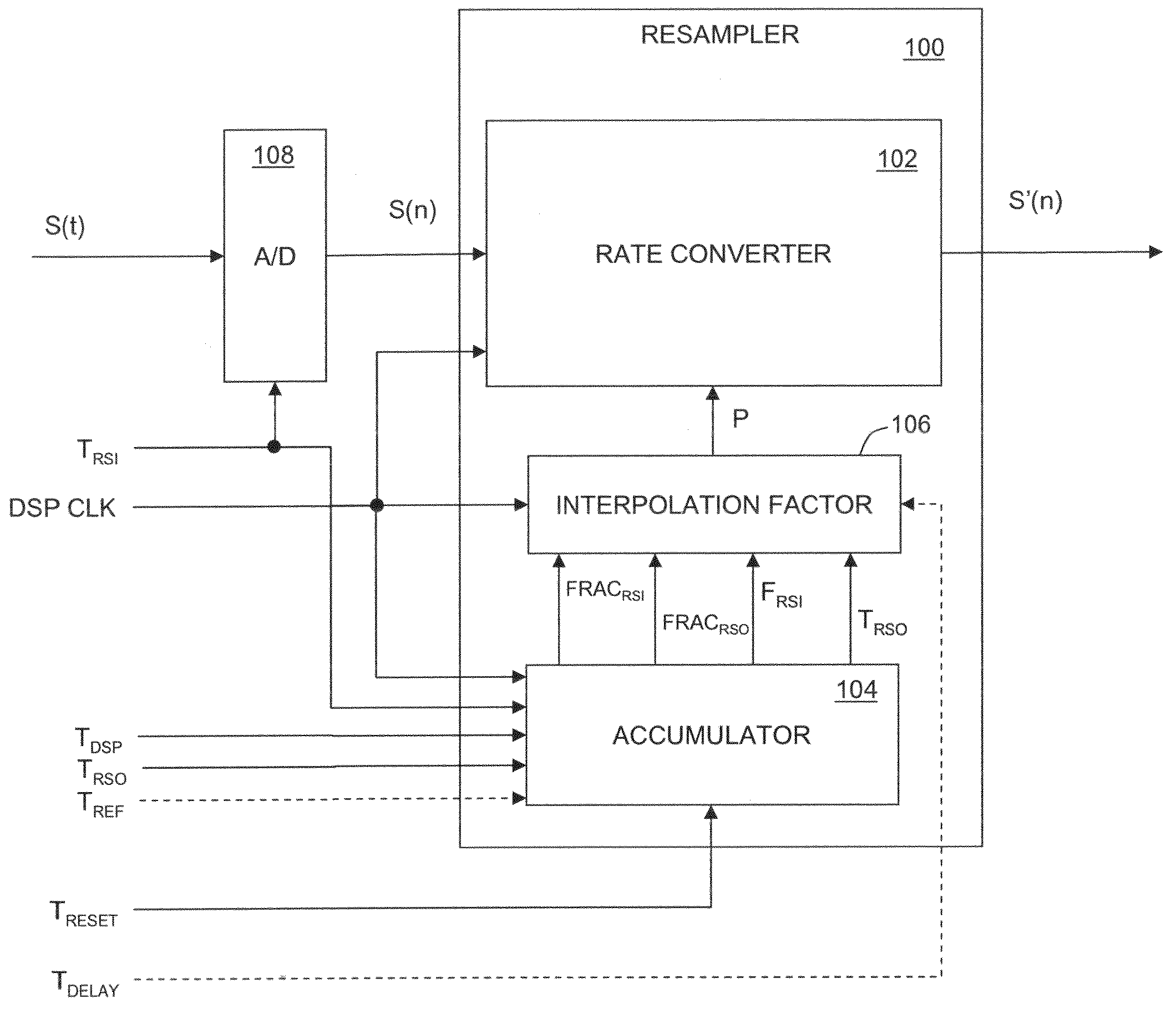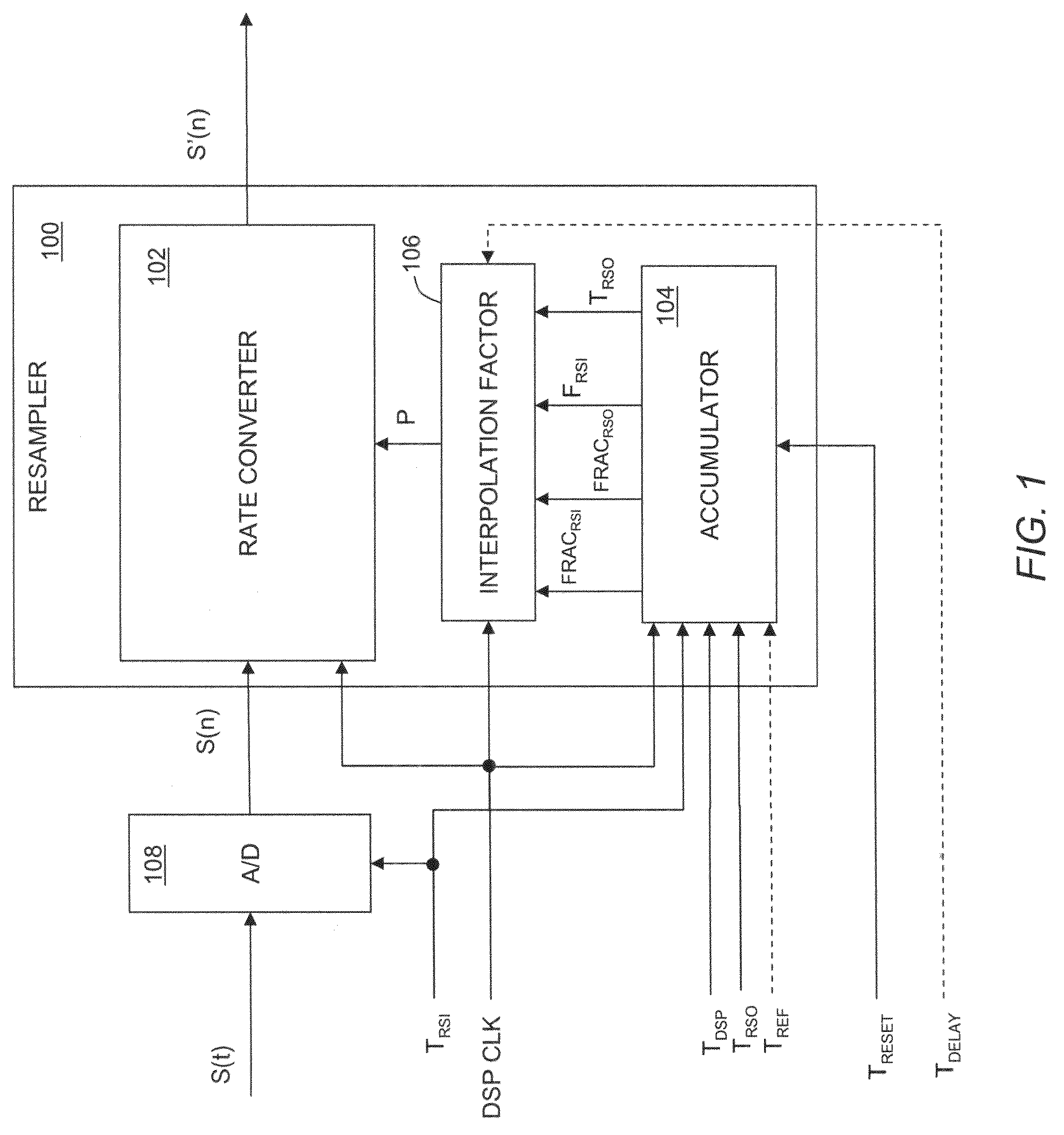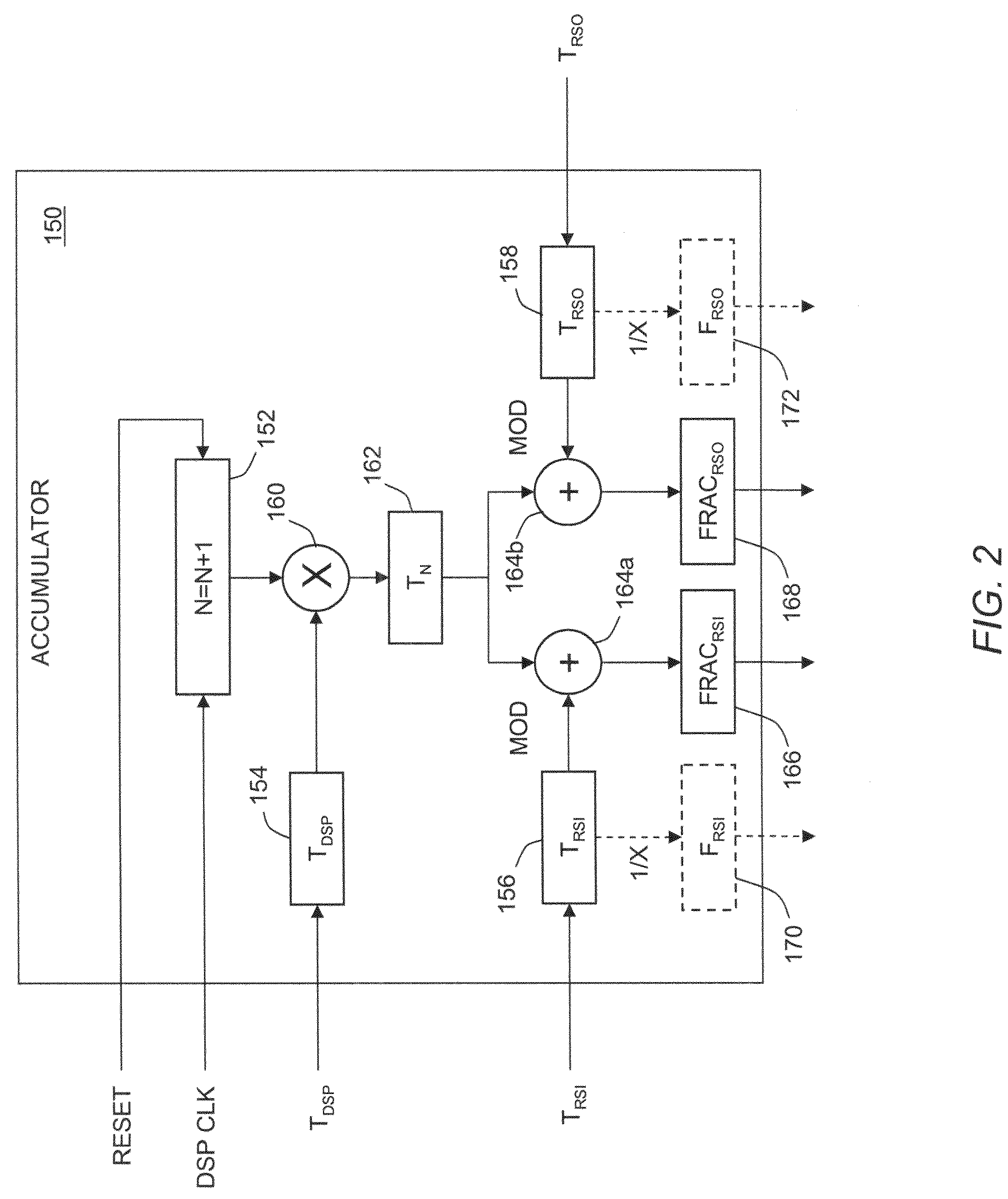Method and apparatus for computing interpolation factors in sample rate conversion systems
a sample rate conversion and factor technology, applied in the field of digital signal processing, can solve the problems of reducing the reliability of the system, limiting the circuit to scaling the sampling rate by a rational number, and limiting the range of values of d, so as to increase the system reliability, simplify the requirements, and simplify the effect of the digital signal processing
- Summary
- Abstract
- Description
- Claims
- Application Information
AI Technical Summary
Benefits of technology
Problems solved by technology
Method used
Image
Examples
Embodiment Construction
[0026]Systems and processes for converting data at one sample rate to data at a second sample rate are described herein. In the prior art, implementations of sample rate conversion systems employ a digital signal processing clock that is equal to, or directly related to, as in an integer multiple of, the output sample rate. Beneficially, in the system and techniques described herein allow for a system processing clock having non-trivial M / N relationship to the output sample rate. For example, M and N can be very large integers. In at least some embodiments, a programmable time delay (having arbitrary range and resolution) can also be applied to the output signal.
[0027]In general, the techniques described herein can be applied to any real-time system having fixed converter frequencies, variable (or even fixed, but different) signal data rates. Use of the term converters, generally includes analog-to-digital converters (ADC) and digital-to-analog converters (DAC), depending upon the p...
PUM
 Login to View More
Login to View More Abstract
Description
Claims
Application Information
 Login to View More
Login to View More - R&D
- Intellectual Property
- Life Sciences
- Materials
- Tech Scout
- Unparalleled Data Quality
- Higher Quality Content
- 60% Fewer Hallucinations
Browse by: Latest US Patents, China's latest patents, Technical Efficacy Thesaurus, Application Domain, Technology Topic, Popular Technical Reports.
© 2025 PatSnap. All rights reserved.Legal|Privacy policy|Modern Slavery Act Transparency Statement|Sitemap|About US| Contact US: help@patsnap.com



